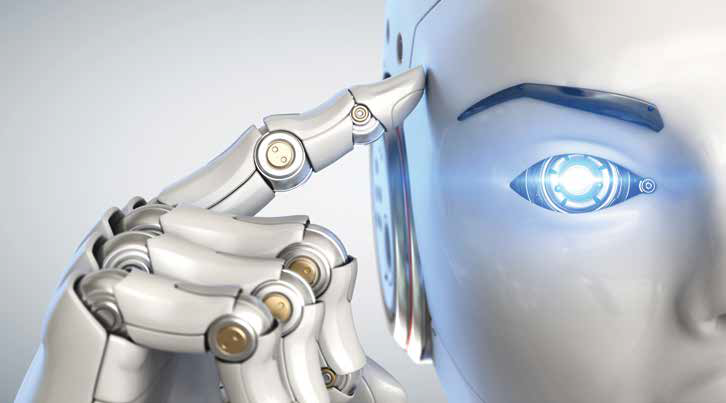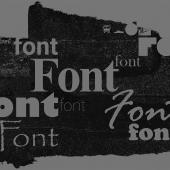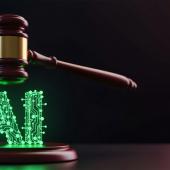
Background
The fourth industrial revolution and artificial intelligence
The fourth industrial revolution is strongly influencing the whole of society. This change reflects progress in sensor technology that is reducing the cost of gathering information as advances in data communications enhance information sharing, generating massive quantities of data that are processed and refined using increasingly efficient artificial intelligence (AI). The emerging symbiosis is taking digitization to a new level throughout the business community, opening up completely unforeseen opportunities. Known as the fourth industrial revolution, this development is expected to add significant value to the economy and to society more generally. It currently appears that we shall see higher productivity, with changes initially in health services, logistics, entertainment, and agriculture. Enterprises in various sectors are investing heavily in deploying artificial intelligence in their operations and services.
Although artificial intelligence has now moved from the research and development stage to commercialization, its wider deployment in business imposes challenges for enterprises and for patent legislation, as it is a completely new concept and a very powerful force for change.
AI-related patent activity increasing
The patenting activity of enterprises always focuses on areas of anticipated economic benefit as businesses seek their own share of the cake, ideally under the ambit of some kind of monopoly. Released in February 2019, Managing IP’s Patent Strategy survey conducted in the previous month indicates that 44 percent of in-house patent attorneys working in enterprises have already filed an AI-related patent application, and that a further 25 percent intend to do likewise over the next five years. The respondents represented a very broad spectrum of the business community, including the life sciences, automotive, energy, telecommunications, software, food, metalworking, medical research, financial, and chemical industries.
Patent Strategy from Managing IP, “Machine yearning: AI and patents,” February 2019. (Patent Strategy surveys more than 60 in-house patent attorneys across different industries to find out what they think about artificial intelligence.)
Statistics collected by the World Intellectual Property Organization (WIPO) suggest that patent applications related to the fourth industrial revolution have skyrocketed since 2013, led by global corporations such as IBM, Microsoft, Toshiba, Samsung, and NEC. For example, most AI-related patents are still only at the pending stage. This opens up an interesting perspective on the future, as nobody yet knows what kind of patent protection will be granted in response to these applications.
Shortcomings in awareness
The 2019 Patent Strategy survey suggests that patent authorities and enterprises are largely uncertain about how patent protection will be suited to AI-related inventions.
Digitization has so far largely related to software development, often relying on copyright protection, and on patent protection only to a limited degree. Code already takes the form of text and enjoys copyright inherently. On the other hand, the same logical operations could have been performed with various codes or in various programming languages, as long as the actual text was not the same. Particularly in Europe, patents might be regarded as too slow and as incapable of protecting software inherently, and the protection of software patents has required the invention to have some traditional technical component (Article 52, European Patent Convention).
Even though these new guidelines at least shed light on theoretical patenting possibilities, artificial intelligence and associated inventions are highly complex and multidimensional, emphasizing the role of outside specialists.
Conditions nevertheless change dramatically when the applications of the fourth industrial revolution effectively add sensors, cameras, image recognition, algorithms, neural networks, artificial intelligence, data processing, and transmission to the software. Patent protection is quite well-suited to these new entities, whereas copyright protection really is not. The patent authorities of various countries also have taken note of the new situation and, for example, the United States Patent and Trademark Office (USPTO) issued new guidelines pertaining to the sector at the beginning of 2019. The World Intellectual Property Organization has published an extensive report on artificial intelligence (WIPO Technology Trends (WITT), 2019). These reports and guidelines already provide good insight into the prospects for protecting artificial intelligence, even though a great deal still remains to be settled through concrete practice.
The role of law firms
Even though these new guidelines at least shed light on theoretical patenting possibilities, artificial intelligence and associated inventions are highly complex and multidimensional, emphasizing the role of outside specialists. Patenting requires an in-depth understanding of both the guidelines and the technology. Specialists must be capable of seeing how a particular AI-related invention can be patented and must be able to communicate with the associated business specialists, while also recognizing when it may be wiser to keep part of an invention (such as an algorithm) as a commercial secret. Specialists also must be able to assess when copyright may provide sufficient protection and to appreciate how database protection or privacy protection relate to the invention.
The solutions and inventions of the fourth industrial revolution must be considered within a complex legal matrix, and it may be challenging for traditional patent offices to serve their customers in this respect. The advantage will lie with law firms that specialize in patent cases, which will be best placed to appreciate and evaluate new solutions and their legal character.
The current patentability of artificial intelligence
The explosive growth in AI patent applications submitted to patent offices has forced them to issue decisions on the patentability of artificial intelligence. The European Patent Office (EPO) has adopted at least a preliminary position on patenting artificial intelligence in its recent guidelines. The EPO also has processed and sought to arrange broader discussions on the protection of artificial intelligence by such means as inviting specialists from industry and law firms to debate with EPO specialists. In the US, the recently published guidelines of the USPTO on subject matter patent eligibility are applicable also to artificial intelligence inventions, but the USPTO has not taken a position on patenting artificial intelligence that is as comprehensive as that of the EPO.
The new EPO Guidelines indicate no major change of policy concerning the patentability of artificial intelligence solutions, and instead the principles of protection continue to follow the principles that are set out in the European Patent Convention and that may be inferred from case law. The Alice and Mayo decisions and their ensuing principles—such as the Alice/Mayo test (now slightly revised in the 2019 patent subject matter eligibility guidance)—similarly continue as the de facto starting point when reviewing the patent eligibility of subject matter—such as that of artificial intelligence—in the US.
The EPO has nevertheless made it clear in the new guidelines that artificial intelligence will be essentially treated as a mathematical method. While mathematical methods are not inherently patentable, they may be allowable when combined with sufficient technical implementation.
The most important principles for protecting artificial intelligence therefore derive from the principles that govern the protection of computer-implemented inventions, mathematical theories, and abstract ideas. Solutions that merely automate functions or that solely concern mathematical theory cannot be patent protected. Correspondingly, merely referring to the use of machine learning in a solution does not make the solution inherently patentable (EPO T 1510/10). From the perspective of protecting artificial intelligence, this means in particular that the problem of the solution to be patented should typically be technical, the solution described must comprise features with technical character, and the solution should be focused on some technical or practical application, such as a process, device, or a computer system. The expression “technical” in this context refers to what is understood by the patent offices as being technical. Even a new algorithm that differs substantially from the prior art will not be inherently open to patent protection, but the solution may be patentable when described in one or more technical applications and in a form implementing technical means, such as being executed on a computerized device or system.
While views between the patent offices may differ concerning solutions that are technical and therefore open to patent protection, the EPO at least has directly indicated in its latest guidelines that features related to teaching artificial intelligence may constitute technical features that may consequently contribute to the inventive step of the overall solution (GL 3.3.1):
“Where a classification method serves a technical purpose, the steps of generating the training set and training the classifier may also contribute to the technical character of the invention if they support achieving that technical purpose.”
Similarly in the US, the specification and limitation of a solution to features related to teaching, feature extraction, or outputs of artificial intelligence to avoid exclusion under 35 USC 101 may correspondingly produce a patentable solution instead of interpreting artificial intelligence solely as an abstract idea.
As with inventions in other sectors, there is no way to provide any prior exhaustive list of when an invention will be patent-eligible or not. For example, AI-inventions in patents may be classified on three levels as follows:
- AI-technologies and formats, such as neural networks and deep learning
- Functional applications of AI-technologies, such as OCR and machine vision
- Application-specific AI solutions, such as medical, telecommunication, and vehicle applications
AI patents may thus be distinguished in respect of whether they are limited to a particular sector or whether there are applications in other areas. This also may have a substantial impact on the scope of protection that the patent confers. One practical concern expressed by enterprises developing artificial intelligence is that—through a practical example and one or more applications defined in the patent—the scope of protection of a patent concerning an AI solution may be tied to a limited application, which must then also be the business case of the enterprise after filing a patent. This can be particularly problematic for enterprises that do not yet know all potential applications after developing an artificial intelligence solution. An enterprise may often subsequently find new applications or uses for its solution that were omitted from the applications when the patent was determined.
At least from the perspective of the EPO and US patent systems, AI-related patent applications are treated like any other software patent application or software-assisted patent application. This means that the question of successfully securing protection particularly turns on how a solution is presented in a patent-eligible form, which calls for special care and knowledge of regional practices and the differences between those practices. In particular, a carelessly designed patent application for an artificial intelligence solution may not necessarily satisfy the EPO’s requirement of technical character. For example, lack of technical character cannot, in many cases, be remedied later on during prosecution of the patent application. Similarly, a carelessly designed patent application for an artificial intelligence solution may also limit certain applications outside the scope of protection.
Managing IP’s Patent Strategy 2019 survey report interestingly notes that half of all US patent attorneys rated the EPO as possessing the best expertise in AI-related transactions. Only 15 percent of European patent attorneys had a corresponding view of the USPTO. This is probably because the EPO has adopted a position and sought to provide guidelines on protecting artificial intelligence.
Despite the new guidelines issued and the positions adopted, enterprises developing artificial intelligence should actively monitor the evolution of patentability of artificial intelligence, as there are practically no comprehensive decisions or clear practices in this area and the subject will probably develop as applicants challenge the patent offices and courts to issue decisions concerning artificial intelligence patent eligibility.
Artificial intelligence as an inventor
Enterprises are also increasingly applying artificial intelligence to make inventions. According to the 2019 Patent Strategy survey, two-thirds of in-house patent attorneys indicate that artificial intelligence is either already used or will be used within the next five years to make inventions. The pharmaceutical industry has probably made the most progress in using artificial intelligence to search for effective drug molecules. AI also may be used in genomics and is particularly effective in such applications as conducting various strength calculations.
The use of AI in invention processes raises the question of identifying the inventor. Is the inventor an artificial intelligence, its owner, or the individual who is using AI at the time when the invention occurs? The starting point for various national patent regimes is that only a private individual can make an invention. This is the case under the European Patent Convention. There is not necessarily any pressing need to amend this provision due to artificial intelligence. Computers and their software have already been used in research and development for decades, and identifying the invention and setting the question continues to require substantial input from some individual who may then be held to be the inventor.
According to the 2019 Patent Strategy survey, two-thirds of in-house patent attorneys indicate that artificial intelligence is either already used or will be used within the next five years to make inventions.
Artificial intelligence may well affect the inventive step and the concept of a person skilled in the art in the future. If artificial intelligence enables anyone to model certain effective drug molecules easily, for example, then patenting them may be difficult, because they would then be viewed as obvious solutions. Patent attorneys also may have difficulty in formulating patent applications when nobody but an artificial intelligence really knows why a particular solution works. This may arise if only an artificial intelligence is capable of perceiving the hidden causalities. Such cases are nevertheless special and the issues can surely be reconciled with the present patent system.
Artificial intelligence and patent litigation
More patents mean a greater risk of infringements. It would appear that much as with the telecoms industry of old, the market will be shared between winners based on who has the strongest patents. Smaller players will correspondingly fall by the wayside if they have no patents or if no attention has been paid to this aspect.
This risk of litigation usually arises when financial success has been achieved and there is something to share, or when the patent proprietor’s market is threatened or constitutes an attractive acquisition for some larger operator. In other words, the risk of litigation is part and parcel of financial success. It would appear that this game has already begun. According to WIPO, the US market is once again leading the world in terms of the volume of patent litigation related to artificial intelligence, with more than 800 AI-related patent families already cited in litigation. This is followed by Germany with fewer than 200 patent families, and then by the UK, France, Japan, China, and Korea.
It follows that all enterprises should pay particular attention to patents as they pursue their own digital reform processes. The price of ignoring patents may be the loss of research and development benefits to some other operator. This is one area in which law firms specializing in patents have a major opportunity to provide indispensable assistance to their clients.





